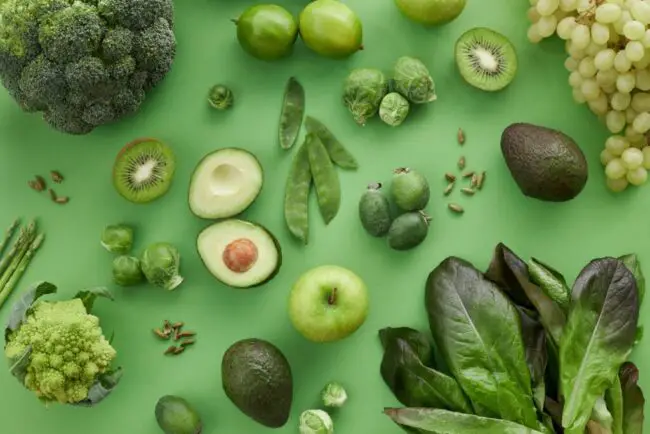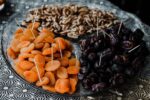Dried Fruits and Vegetables: Too Good to Resist

Dried fruits and vegetables are a nutritious and delicious addition to any diet. Packed with fiber, vitamins, and minerals, they offer a convenient and easy way to boost your daily intake of essential nutrients. Not only can they help reduce the risk of chronic diseases like heart disease and diabetes, but they also have a longer shelf life than their fresh counterparts, making them a more affordable and accessible option. In this blog post, I’ll explore the benefits of incorporating dried fruits and vegetables into your diet, as well as provide tips for buying and storing them and highlight some of the top options for optimal healthy nutrition.
The Benefits of Including Dried Fruits and Vegetables in Your Diet

Dried fruits and vegetables are a great source of essential nutrients like fiber, vitamins, and minerals. They are a convenient and healthy way to incorporate more produce into your diet. One of the main advantages of including dried fruits and vegetables in your diet is the reduced risk of chronic diseases like heart disease, diabetes, and certain cancers. Studies have shown that consuming dried fruits and vegetables on a regular basis can help lower cholesterol levels, reduce inflammation, and improve blood sugar control. In addition to their disease-fighting properties, dried fruits and vegetables are also a great source of energy and can help keep you feeling full and satisfied throughout the day. They are a great snack option for those trying to lose weight or maintain a healthy diet. Overall, dried fruits and vegetables are a nutrient-dense and convenient way to improve your overall diet and maintain good health.
How to Incorporate Dried Fruits and Vegetables into Your Meals
Dried fruits and vegetables can be an easy and convenient way to boost the nutritional value of your meals. Here are some ideas on how to incorporate them into your diet:
Add to Salads
Sprinkle dried fruits and vegetables into your salads for a pop of sweetness and crunch. Try adding dried cranberries, cherries, or apricots to a spinach salad or mix sun-dried tomatoes into a Mediterranean salad.
Mix into Oatmeal or Yogurt
For a quick and easy breakfast or snack, mix dried fruits and vegetables into your oatmeal or yogurt. Try adding dried blueberries, raisins, or chopped dates for a burst of flavor and nutrition.
Blend into Smoothies
Add dried fruits and vegetables to your smoothies for an extra boost of vitamins and minerals. Try mixing dried mango or pineapple into a tropical smoothie or blending dried kale or spinach into a green smoothie.
Use as a Sweetener
Sweeten your sauces and dressings with dried fruits instead of processed sugars. Try using chopped dates or raisins in a homemade BBQ sauce or blending dried apricots into a vinaigrette.
Bake with Dried Fruits
Add dried fruits to your baked goods for a healthier alternative to sugary treats. Try mixing dried cranberries into muffins or using chopped dried figs in a homemade granola.
The Nutritional Value of Dried Fruits and Vegetables

Dried fruits and vegetables pack a nutritional punch despite the drying process that removes some moisture. In fact, a serving of dried fruits or vegetables can provide up to three times the amount of nutrients compared to their fresh counterparts. Dried fruits and vegetables are a great source of essential nutrients like fiber, vitamins, and minerals. They are also high in antioxidants which are essential for good health.
Some of the key nutrients found in dried fruits and vegetables include:
Fiber: Dried fruits and vegetables are a great source of fiber which is essential for healthy digestion, maintaining healthy cholesterol levels, and reducing the risk of heart disease and diabetes.
Vitamins: Dried fruits and vegetables are a rich source of vitamins A, C, and K which are essential for healthy eyes, skin, and bones. They are also a good source of B vitamins which help convert food into energy.
Minerals: Dried fruits and vegetables are high in essential minerals like iron, potassium, and magnesium which help maintain healthy blood pressure, build strong bones, and reduce the risk of chronic diseases.
Overall, including dried fruits and vegetables in your diet is a great way to boost your nutrient intake and reduce the risk of chronic diseases. Plus, they are a tasty and convenient way to add more fiber, vitamins, and minerals to your meals and snacks.
Dried Fruits and Vegetables vs. Fresh: Which is Better for You?

When it comes to nutrition, both fresh and dried fruits and vegetables have their advantages. Fresh produce is often higher in water content, which can help keep you hydrated, and may contain more vitamin C since the drying process can cause some loss of this nutrient. On the other hand, dried fruits and vegetables are more concentrated in nutrients, since the moisture has been removed. One serving of dried fruits or vegetables can provide up to 3 times the amount of nutrients compared to fresh produce.
Another advantage of dried fruits and vegetables is their convenience and longer shelf life. They are easy to store and transport, making them an ideal snack option for when you’re on the go. Plus, they can last for months when stored properly, which means you can always have them on hand even when fresh produce isn’t available or affordable. However, choosing dried fruits and vegetables without added sugar or preservatives is important, as these can make them less healthy than their fresh counterparts. Always check the ingredient lists and nutrition labels before purchasing. Also, keep in mind that dried fruits and vegetables are generally higher in calories and sugar than fresh produce, so it’s important to watch your portion sizes.
I would like to add that both fresh and dried fruits and vegetables have a place in a healthy diet. Choosing the right option depends on your individual preferences and circumstances. If you’re looking for convenience and a longer shelf life, dried fruits, and vegetables can be a great option as long as you choose varieties without added sugar or preservatives.
Tips for Buying and Storing Dried Fruits and Vegetables
When it comes to buying and storing dried fruits and vegetables, here are some tips to keep in mind:
Buying Tips
Look for options with no added sugar, preservatives, or sulfites. These additives can reduce the nutritional value and potentially cause adverse health effects. Choose organic options when possible to avoid exposure to harmful pesticides and chemicals. If buying in bulk, make sure the bins are covered to prevent contamination from insects or other environmental factors. Avoid buying fruits or vegetables that are discolored or have an off odor, as this may indicate spoilage or mold.
Storing Tips
Store dried fruits and vegetables in an airtight container in a cool, dry place to maintain freshness and prevent spoilage. A pantry or cupboard works best. If storing for an extended period, consider keeping it in the refrigerator or freezer to extend the shelf life. Be sure to label the container with the date of purchase to keep track of freshness. If using a plastic container, make sure it’s BPA-free to avoid potential health risks. By following these tips, you can ensure that your dried fruits and vegetables retain their nutritional value and stay fresh and delicious for longer.
The Top Dried Fruits and Vegetables to Try for Optimal Health Nutrition
Dried Fruits:
Raisins: These tiny dried grapes are a good source of fiber and antioxidants, and are a delicious addition to oatmeal or yogurt.
Dates: These sweet and chewy fruits are high in fiber, potassium, and antioxidants, and make a great natural sweetener in baked goods or smoothies.
Figs: These sweet and crunchy fruits are high in fiber and potassium, and are a delicious snack on their own or added to salads or yogurt bowls.
Apricots: These soft and tangy fruits are a good source of fiber and vitamin A, and make a great addition to trail mix or granola.
Dried Vegetables:
Sun-Dried Tomatoes: These concentrated tomatoes are high in vitamin C and antioxidants, and are a flavorful addition to pasta dishes or salads.
Mushrooms: Dried mushrooms are a good source of vitamin D and antioxidants and can be rehydrated and added to soups or stir-fries.
Sweet Potatoes: These mildly sweet and nutritious vegetables are high in fiber, vitamin A, and antioxidants, and make a great snack or addition to trail mix.
Overall, incorporating a variety of dried fruits and vegetables into your diet can provide numerous health benefits and add flavor and texture to your meals and snacks.
Conclusion
In conclusion, dried fruits and vegetables are a nutritious and delicious addition to any diet. They are an excellent source of essential vitamins, minerals, and fiber, and can help reduce the risk of chronic diseases such as heart disease and diabetes. Incorporating dried fruits and vegetables into your meals can be a quick and easy way to boost your nutrient intake, and they can be used in various recipes. While both fresh and dried fruits and vegetables have nutritional value, dried options are more convenient and have a longer shelf life. Remember to choose options with no added sugars or preservatives, and store them properly to maintain freshness. So, next time you’re looking for a healthy snack or ingredient, give dried fruits and vegetables a try, they’re too good! Thank you for reading today’s post








